Contents
Market Overview
We want to wish all those celebrating the holiday this coming Thursday a safe and Happy Thanksgiving. Our next EM Weekly will be published on December 5th.
U.S. Treasury plans to pull back unused funds from the Fed. The Fed’s SMCCF buying power may have stalled since the introduction in May, but the sentiment in credit markets has been significant. Notwithstanding, the Fed balance sheet now stands at an all-time high of $7.2tn. Indeed, the Fed were actively engaged at the peak of the program, buying $275m/daily in corporate bonds, which is now only $29m/daily. We await further clarity as the Fed has already pushed back, which puts further emphasis on Fed speakers in the coming days, but there are other avenues to rekindle the program via Core ESF funds or additional congressional input. We also note that the ECB temporarily paused its corporate buying program under CSPP in 2018, only to resume purchases the following year. Elsewhere, Lagarde signaled more easing at the ECB Forum, Bitcoin broke above $18,000, Moderna’s update proved promising, Pfizer sought FDA approval for its COVID-19 vaccine and GBP traded up to 1.33 on Brexit hopes. Anxiety in equities resurfaced again this week as further restrictions hit the U.S., and lockdowns in Europe seemed likely to extend through December. However, Emerging Markets have held up well. EM Sovereign Credit ended up 0.2% on the week, with EM Local up 1.1%. Within EM Credit, Sri Lanka, Tajikistan and Cameroon outperformed as Lebanon, Suriname and Bolivia lagged. China printed its first EUR-denominated bond at negative yields, as it issued 5yr bonds MS+30 when swaps trade at -45bp. This comes as the CNH traded at 2.5yr lows and as Chinese local bonds continue to edge wider on an improved domestic backdrop, where the correlation to copper is noteworthy as it traded up to $7,200/t this week. Aramco also brought a five-tranche transaction that garnered interest of $50bn in orders for a size of $8bn. The new issue offered a healthy concession to outstanding secondary bonds, which subsequently traded higher. Of note, Guatemala remained volatile over a dispute with its domestic utility, which has led to the sovereign entering the grace period associated with the 2026 coupon. This also comes as Suriname seeks a five-month payment deferral, with a consent solicitation that expires on November 24th.
The calendar for next week sees rate decisions out of Colombia, Ghana, Kenya, Nigeria and South Korea, but all should remain unchanged. This comes as Indonesia surprised with a 25bp cut last week (fifth cut in 2020) and Turkey hiked by 475bp to 15%, while providing strong forward guidance. Elsewhere, India will report GDP, Brazil and South Africa will be out with inflation and Thailand will report trade and manufacturing data.
Fixed Income
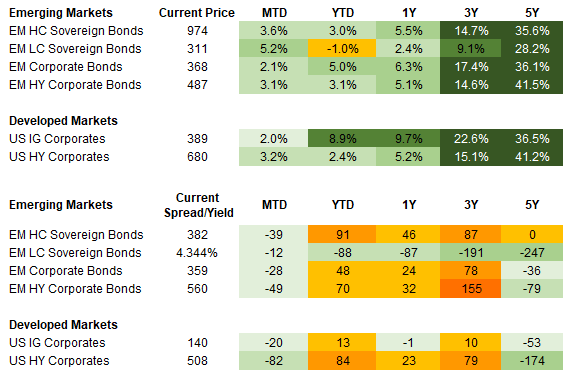
Equities
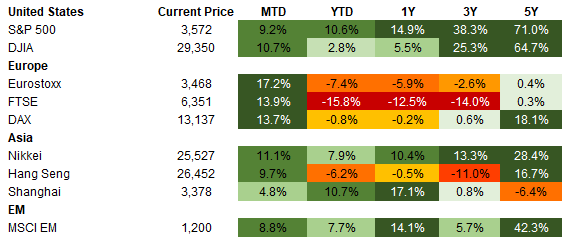
Commodities

Source for data tables: Bloomberg, JPMorgan, Gramercy. EM Fixed Income is represented by the following JPMorgan Indicies: EMBI Global, GBI-EM Global Diversified, CEMBI Broad Diversified and CEMBI Broad High Yield. DM Fixed Income is represented by the JPMorgan JULI Total Return Index and Domestic High Yield Index. Fixed Income, Equity and Commodity data is as of November 20, 2020 (Mid Afternoon).
Emerging Markets Weekly Highlights
The Central Bank of Turkey (CBRT) tightened monetary policy and simplified its framework, confirming a pivot to a more market-friendly approach, Peru gets its third president in a week in an effort to regain social stability, Bolivia’s economy minister states intent to seek debt relief, and U.S.-China tensions simmer post-election as Trump doubles down on China policy
TThe Central Bank of Turkey (CBRT) tightened monetary policy and simplified its framework, confirming a pivot to a more market-friendly approach
Event: This week the CBRT hiked its main policy rate (1-week Repo Rate) by 475bps to 15%, from 10.25% and materially simplified its monetary policy framework by unifying all previously used rates at 15%, the level of the main policy rate. The authorities also signaled that monetary policy would remain tight until a permanent fall in inflation is achieved.
Gramercy commentary: Strong action and forward guidance by the CBRT showing commitment to fight inflation under newly appointed governor, Naci Agbal, were critically important to reassure markets that a material policy U-turn is indeed materializing. By tightening monetary policy, streamlining its framework and issuing relatively hawkish forward guidance, Agbal’s CBRT passed the markets’ test, at least for now. Importantly, it delivered concrete policy actions to back up the recent constructive rhetoric, including by President Erdogan himself. Turkish assets have reacted very positively, especially on the local side. Maintaining a pragmatic policy approach and improving the dialogue with investors will be essential for sustaining the recent gains and extending the rally further. Our assessment is that CBRT’s rate decision and messaging this week sets the stage nicely for a continuation in Turkish Lira (TRY) outperformance into year-end. The currency still has significant catch-up potential and monetary policy is now sufficiently tight to start closing the economy’s external balances gap, in our view. It should also help incentivize local savers to take profits on their USD long positions and switch back into TRY on a more sustained basis. Onshore real interest rates measured against current inflation are now around 3% and close to 4% on a forward-looking basis using medium-term inflation expectations, which compares well to EM peers and historical reference levels. The technical picture also appears favorable with record low foreign exposure to local assets, which should support inflows in the near-term. In addition, the TRY remains deeply undervalued on many metrics and despite the impressive spot rally over the last couple of weeks, has thus far recovered only about a third of its peak-to-trough in 2020, leaving it with room to catch-up against a more supportive policy backdrop. The near-term domestic policy outlook has improved, but risks remain significant and are mainly geopolitical in nature, which makes them more challenging to predict and will keep us very vigilant. Overall, in a context of a more favorable global top-down environment for EM in 2021 and still large accumulated underperformance relative to peers, Turkish assets have the potential to perform well next year. However, it will be important to carefully monitor the authorities’ commitment to maintaining constructive policies beyond the immediate near-term and not reverse course once acute market pressure has subsided.
Peru gets its third president in a week in an effort to regain social stability
Event: Over the past few weeks, violent protests consumed Peru’s streets in the wake of President Vizcarra’s impeachment. After three protestors were killed during a crackdown on a peaceful march in Lima, the head of Peru’s Congress and Lima’s Mayor both called for Vizcarra’s successor, Manuel Merino, to resign. Congress has now approved an interim President, Francisco Sagasti, with the support of 97 of the 123 members of Congress who participated in the vote. He will hold office until the April 2021 elections.
Gramercy commentary: The largely centrist and technocratic President Francisco Sagasti and cabinet should ease near-term instability. However, the pressure for populist policy action and political jockeying ahead of the April 2021 election will keep risks elevated. Sagasti importantly voted against Vizcarra’s impeachment which should be beneficial for quelling social unrest, given the population’s general approval of Vizcarra and distrust of Congress. The new finance minister, Waldo Mendoza, previously held the post during the Toledo Administration (2001-06) and will likely maintain fiscal policy continuity. Given that Sagasti’s center-right Morado Party holds a small number of seats in Congress and the interim nature of the Administration, governability challenges will persist regardless of a moderate and centrist approach. Meanwhile, additional pension and banking system actions will likely be put forward in the context of economic support amid the COVID-19 crisis with the potential to gradually erode confidence and liquidity in local markets. This could increase dollarization and begin to challenge the central bank’s mandate to keep interest rates low to support growth amid the ongoing crisis while maintaining currency stability.
Bolivia’s economy minister states intent to seek debt relief
Event: Bolivia’s Economy Minister announced that the government intends to negotiate with creditors to temporarily suspend international debt payments in order to preserve funds for economic recovery.
Gramercy commentary: The government’s statement is not overly surprising given similar comments by newly elected President Luis Arce during the campaign period, the country’s growing macroeconomic challenges and Arce’s policy agenda which envisages demand fueled growth supported by public spending. Fiscal and current accounts shifted into deficit following the 2014/15 collapse in oil prices and have continued to widen amid the ongoing crisis, eroding FX reserves to under $3.5bn from just over $13bn in 2014. This compares to the country’s total outstanding Eurobond debt of $2bn with debt service of just over $1bn through 2023. While the general perception is that this request will be targeted to multilateral and bilateral lenders as they comprise the bulk of Bolivia’s debt, there is a possibility albeit not our base case for private sector involvement (PSI) given domestic political dynamics and ongoing efforts by the official sector to broaden burden sharing. We expect further downside pressure on bond prices given this risk combined with challenged economic conditions and still comparatively tight spreads.
U.S.-China tensions simmer post-election as Trump doubles down on China policy
Events: President Donald Trump is making a last-ditch effort at fortifying his “tough-on-China” policy with an eye toward making it more difficult for the incoming Biden Administration to reverse his approach. This week, the U.S. announced a ban on trading securities linked to the “Communist Chinese military.”
Gramercy commentary: Thus far, the impact on Chinese bonds has been limited, with the exception of ChemChina, an SOE whose subsidiary counts the U.S. as a significant revenue source. The most likely actions the Trump Administration could take in the coming weeks include entity list actions against Chinese companies and new sanctions targeting pro-China Hong Kong lawmakers or senior Chinese officials. The Trump Administration could also consider capital market restrictions, with more Chinese companies added to the DoD list. While these strategies could have an impact on Chinese companies in the short-term, we view them as a low medium-term risk for two reasons. First, most of these measures will have been put into place via executive orders, which can easily be reversed by the next president. Second, we expect Biden’s China policy to take a more conciliatory approach than Trump’s. While Biden is certain to be tougher on China than President Obama given the domestic climate, we expect he will need to balance any pressure he puts on China regarding economic competition and human rights violations against his desire to work with China on global climate policy and other multilateral issues. In the meantime, the Chinese government will likely maintain its “wait-and-see” approach, resisting any retaliation in the near-term as it creates an opportunity to engage with a more friendly Biden Administration.
Emerging Markets Technicals
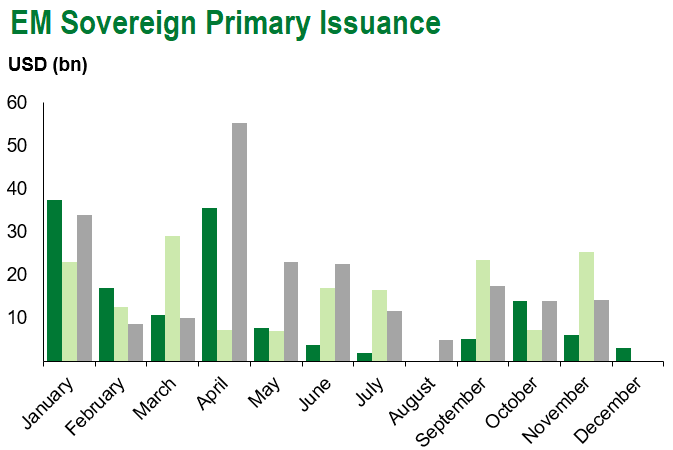
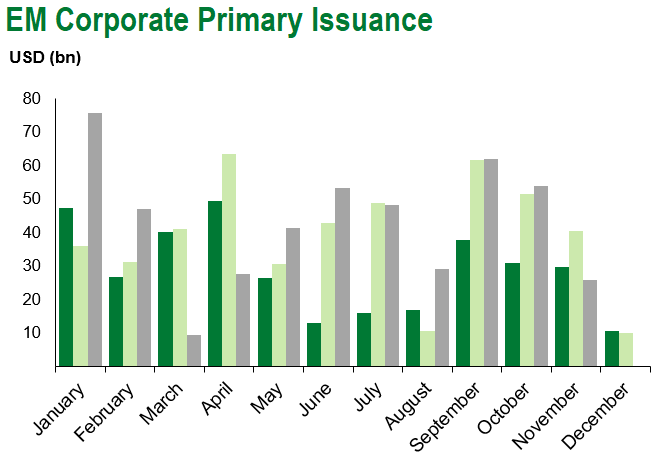
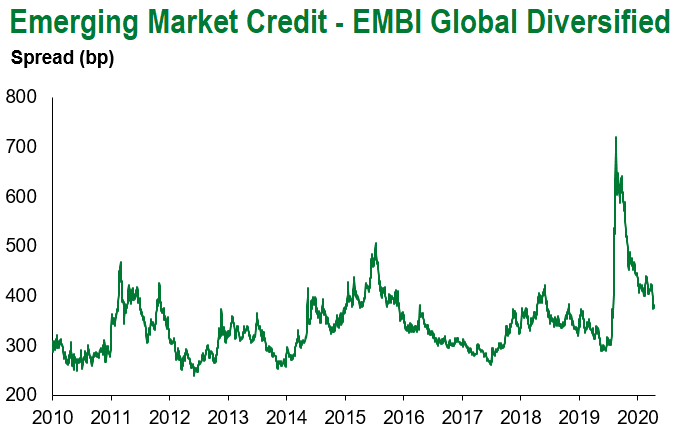

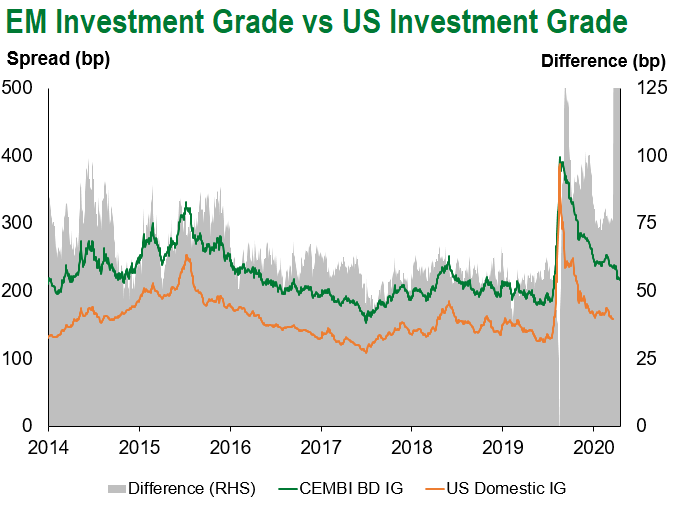
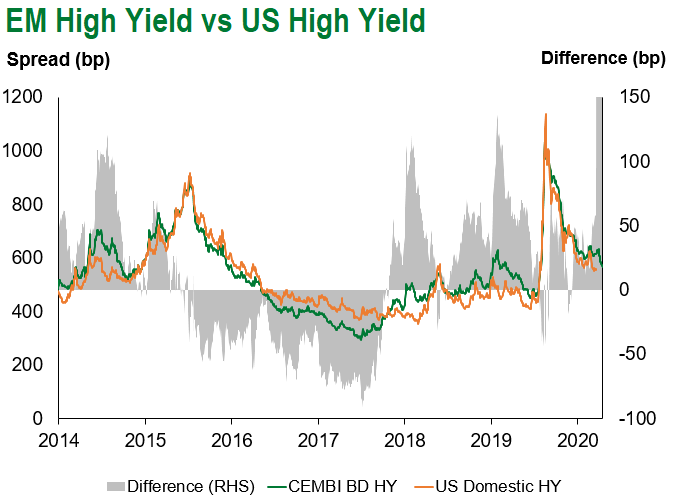
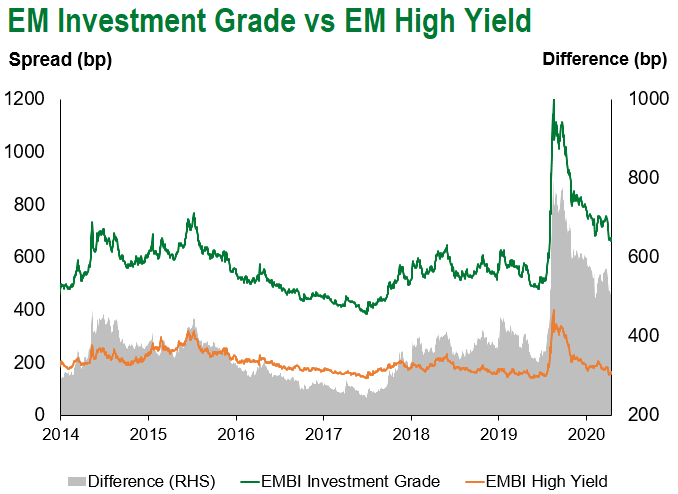
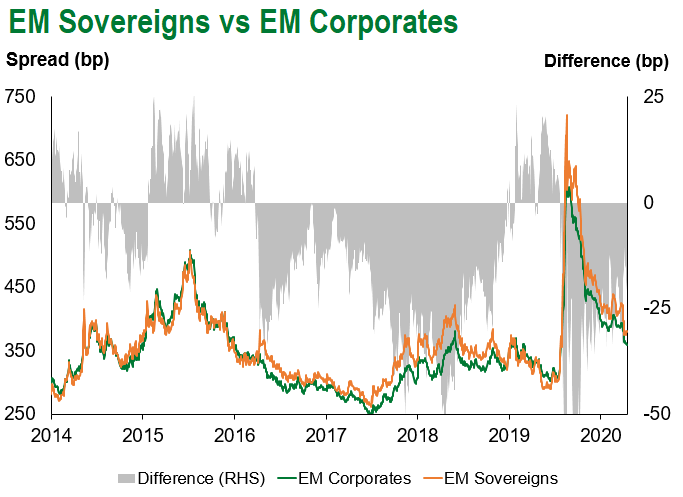
Emerging Markets Flows
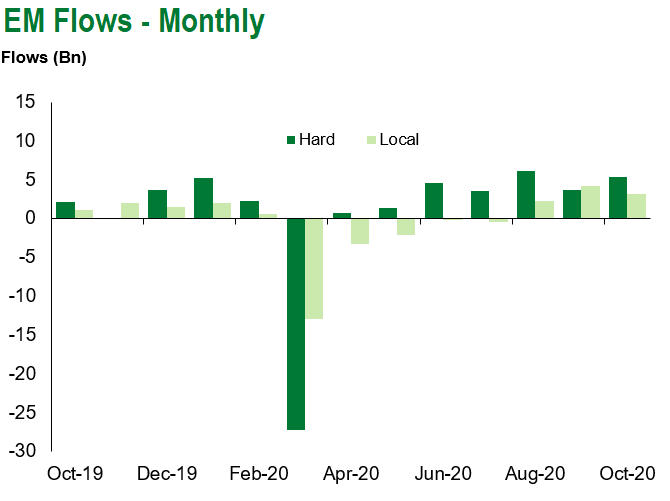
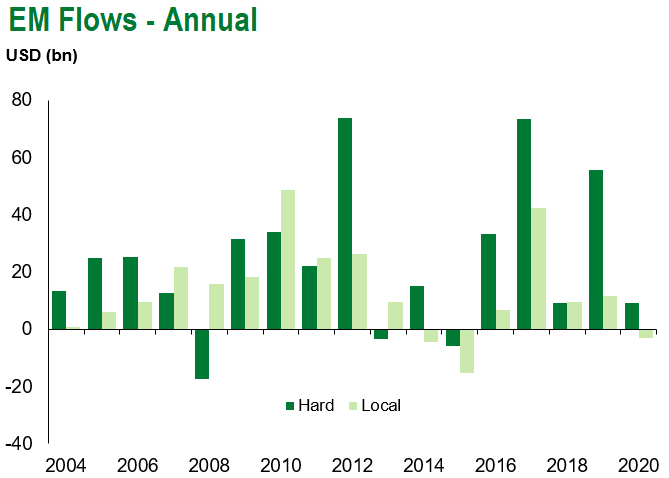
Source for graphs: Bloomberg, JPMorgan, Gramercy. As of November 20, 2020.
COVID Resources
Emerging Markets COVID-19 Case Summary
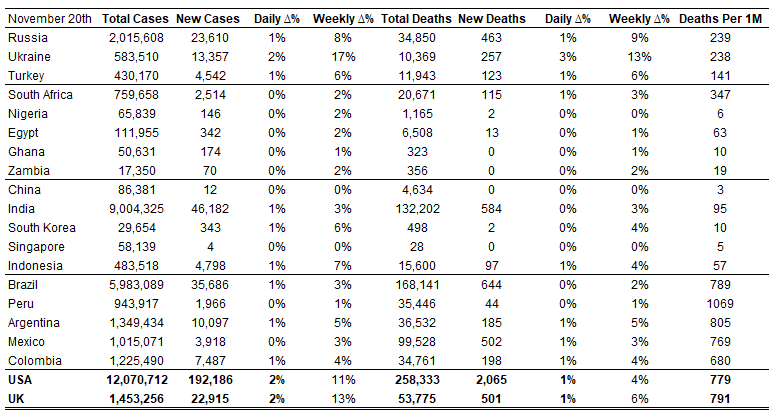
Source: Worldometer as of November 20, 2020.
Additional Crisis Resources:
Johns Hopkins COVID-19 Case Tracker
For questions, please contact:
Kathryn Exum, Senior Vice President, Sovereign Research Analyst, [email protected]
Petar Atanasov, Senior Vice President, Sovereign Research Analyst, [email protected]
Tolu Alamutu,CFA, Senior Vice President, Corporate Research Analyst, [email protected]
James Barry, Vice President, Corporate Research Analyst, [email protected]
This document is for informational purposes only. The information presented is not intended to be relied upon as a forecast, research or investment advice, and is not a recommendation, offer or solicitation to buy or sell any securities or to adopt any investment strategy. Gramercy may have current investment positions in the securities or sovereigns mentioned above. The information and opinions contained in this paper are as of the date of initial publication, derived from proprietary and nonproprietary sources deemed by Gramercy to be reliable, are not necessarily all-inclusive and are not guaranteed as to accuracy. This paper may contain “forward-looking” information that is not purely historical in nature. Such information may include, among other things, projections and forecasts. There is no guarantee that any forecasts made will come to pass. Reliance upon information in this paper is at the sole discretion of the reader. You should not rely on this presentation as the basis upon which to make an investment decision. Investment involves risk. There can be no assurance that investment objectives will be achieved. Investors must be prepared to bear the risk of a total loss of their investment. These risks are often heightened for investments in emerging/developing markets or smaller capital markets. International investing involves risks, including risks related to foreign currency, limited liquidity, less government regulation, and the possibility of substantial volatility due to adverse political, economic or other developments. The information provided herein is neither tax nor legal advice. Investors should speak to their tax professional for specific information regarding their tax situation.